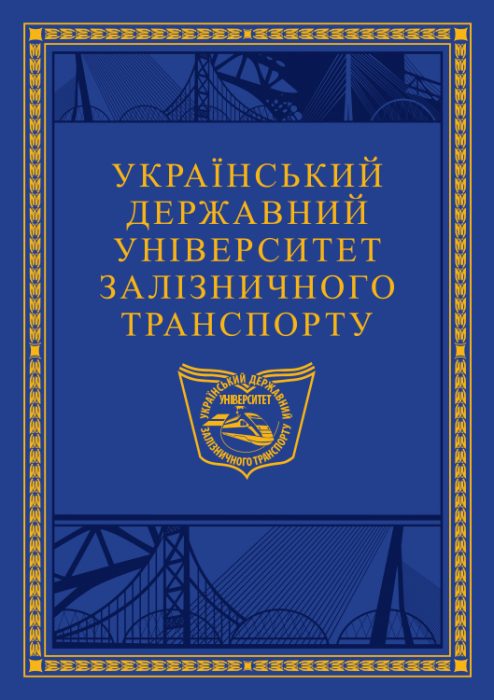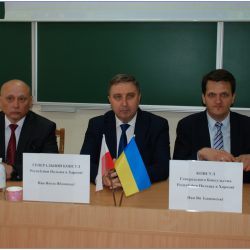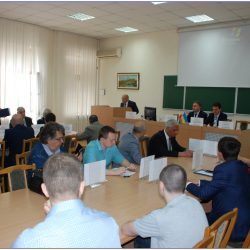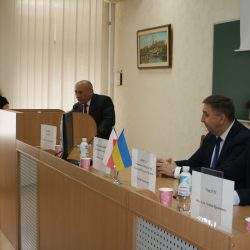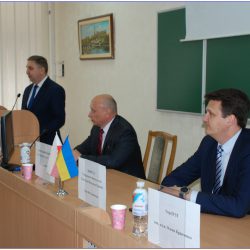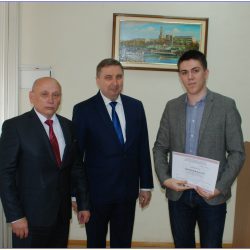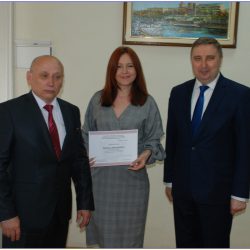History of the university
The history of UkrSURT dates back to 12 June 1930, when the Kharkiv Operation and Traction Institute of Railway Transport was established on the basis of Resolution No. 19/672 of the Council of People’s Commissars of the Ukrainian SSR. The decision to open our educational establishment and a number of other higher railway educational institutions was driven by an attempt to solve the acute staffing problem of the rapidly developing transport industry. I. O. Besedovsky was appointed as the director of the institute. On 1 September 1930, 432 students began their studies at the newly created institute, and the postgraduate school began its activities.
In the 1930s, there was a gradual development of the higher education institution and its material and technical resources. The Higher technical courses of the People’s Commissariat of Railways became part of the institute. In 1932, the institute moved to the premises of the North-Donetsk Railway Administration, where one of the educational buildings is still in operation now. In addition to classroom training, students received practical training in the laboratories of physics, chemistry, heat engineering and workshops. Not only mechanical engineers and rolling stock maintenance specialists but also builders, electricians and economists started to be trained. The teaching staff was growing and becoming more qualified. The number of students in 1933 reached 1,564.
In 1932, the educational institution was renamed into the Kharkiv Operation and Mechanical Institute of Railway Transport Engineers. In 1934, it was renamed into the Kharkiv Institute of Railway Transport Engineers. It was then that the familiar abbreviation “KhIIT” appeared.
The accession of Kyiv Railway Institute to KhIIT was an important stage in the development of the institute in the summer of 1934. The total number of students in the 1934/35 academic year reached 2,144. KhIIT consisted of Mechanical, Operation, Engineering and Economics faculties, as well as an evening department and Kyiv branch. During the decade, the institute began to gradually emerge as one of the largest transport universities in the country, but its further development was halted by the war.
In the autumn of 1941, KhIIT was evacuated to Tashkent with the main property, equipment, library and archival documents. Without interrupting the educational process, the university staff took part in the construction of canals, factories and railways, and in the cotton harvest in Uzbekistan. During the 2nd World War, more than 100 employees and students of KhIIT became front-line soldiers, 15 of whom were killed in battles with the Nazis.
After the liberation of Kharkiv, the institute returned to its hometown. The staff of KhIIT had to work hard to repair the damage caused by the occupation. Despite the difficulties, lectures and practical classes resumed in December 1944.
In the 1946/47 academic year, the institute had four faculties (Mechanical, Traffic, Engineering and Economics, and Construction) counting 1,400 students. And the following year, KhIIT reached the pre-war number of graduates, having trained 249 railway specialists.
The full resumption of the institute’s activities was accompanied by qualitative changes in the academic teaching staff and the development of research work. In the academic year 1953/54, a new academic building with a total area of 5,300 square metres was commissioned, 12 new laboratories and 23 classrooms were created.
In 1960, the new faculty Automation, Telemechanics and Communications (ATC) was organised, which for a long time was the main supplier of specialists in this field for the railways of Ukraine, the Volga region and Kazakhstan.
In the 1960s, a team of highly qualified lecturers, associate professors and professors was formed at KhIIT. Almost half of the teaching staff had academic degrees and titles. Professors and doctors of science worked at 17 of the 28 specialized departments. Dozens of monographs were published, and a series of textbooks and manuals for transport higher education institutions were prepared.
The 1970s and 1980s were a time of further development of the institute. It consisted of eight faculties (Mechanical, Operation, Construction, ATC, Engineering and Economics, Evening, Extra-mural and Professional Development) and 37 departments. The number of students has increased significantly. Their number approached 9,000, and almost 1,400 young specialists received their diplomas each year. The educational and laboratory facilities were upgraded, and the institute had 3 research and 63 teaching laboratories. The total area of educational premises was 14,000 square metres. To improve the quality of the educational process, the departments introduced new machinery and equipment and widely used technical teaching aids.
The practice of concluding agreements on scientific and technical cooperation with the Southern Railway and industrial enterprises of Kharkiv and the region became widespread. Their purpose was to introduce new scientific and technological achievements into production, and to bring the training process closer to the needs of production. During this period, a research institute began to operate on a voluntary basis, and branches of the departments appeared at enterprises.
In 1993, KhIIT was accredited by the State Accreditation Commission of the Ministry of Education of Ukraine in full at the IV level of accreditation with a change of status (it was renamed into the Kharkiv State Academy of Railway Transport) and was granted appropriate autonomy rights. According to the Order of the Ministry of Transport of Ukraine No. 364 of 28 May 2001, the educational institution was renamed into the Ukrainian State Academy of Railway Transport.
By the Order of the Cabinet of Ministers of Ukraine No. 1049-p of 30 October 2014, the Ukrainian State Academy of Railway Transport was reorganised into the Ukrainian State University of Railway Transport.
Over its long history, UkrSURT has trained about 80,000 specialists for the railway transport, transport construction and other sectors of the national economy. There are ministers, deputy ministers, heads of railways,Ukrzaliznytsia and large enterprises, renowned scientists and statesmen among the university’s graduates. Here are the names of some of them:
Hero of Ukraine, academician of the Transport Academy of Ukraine,
H.M. Kirpa, Minister of Transport and Communications of Ukraine, director general of Ukrzaliznytsia (2000-2004), honorary citizen of Kharkiv;
Hero of Ukraine, academician of the Transport Academy of Ukraine
V.M. Ostapchuk, People’s Deputy of Ukraine, former head of the Southern Railway;
Hero of Socialist Labour B.Ye. Shcherbyna, former Minister of Construction of Oil and Gas Industry Enterprises of the USSR, and since 1984 – Deputy Chairman of the Council of Ministers of the USSR, chairman of the Government commission on the elimination of the consequences of the Chernobyl disaster;
Hero of Socialist Labour, doctor of technical sciences, professor
M.S. Konarev, former head of the Southern Railway, Minister of Railways of the USSR (1982-1991), honorary citizen of Kharkiv.


